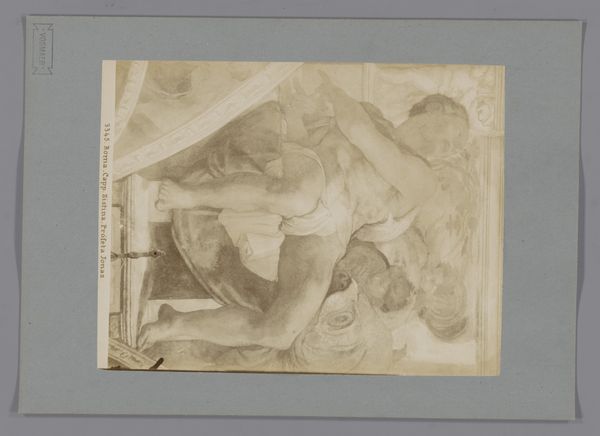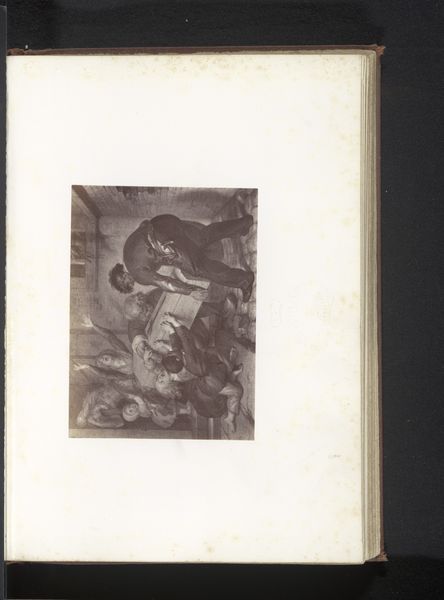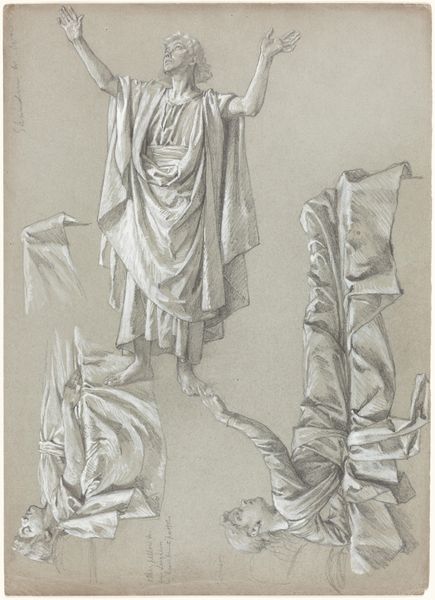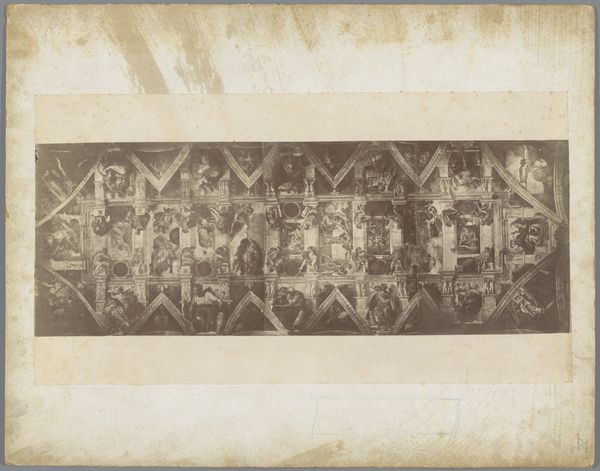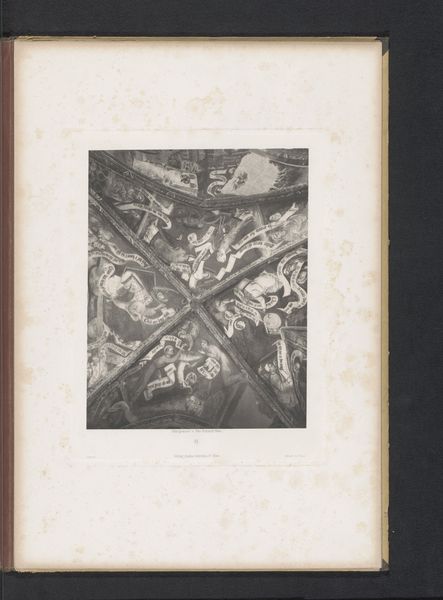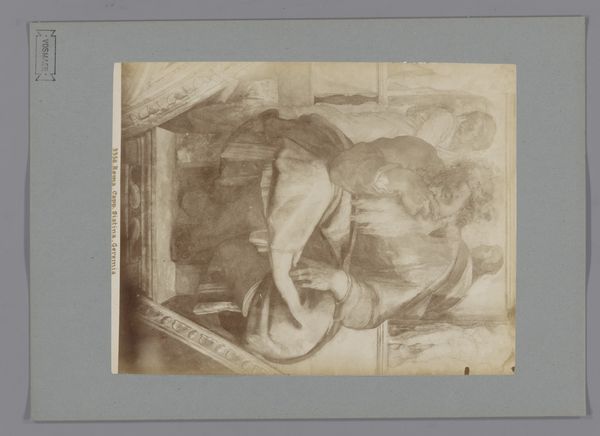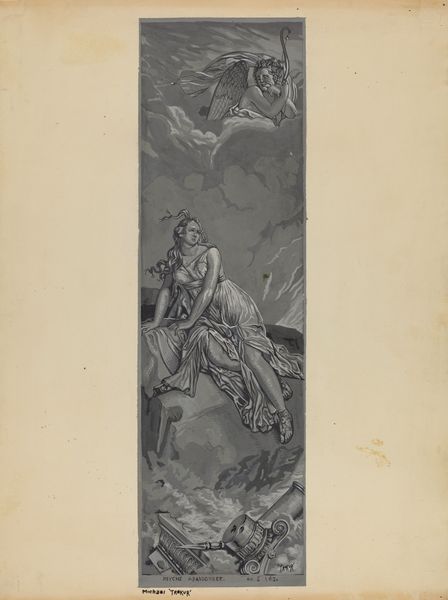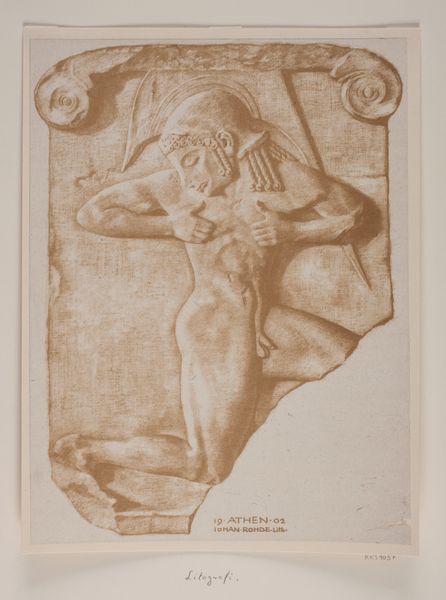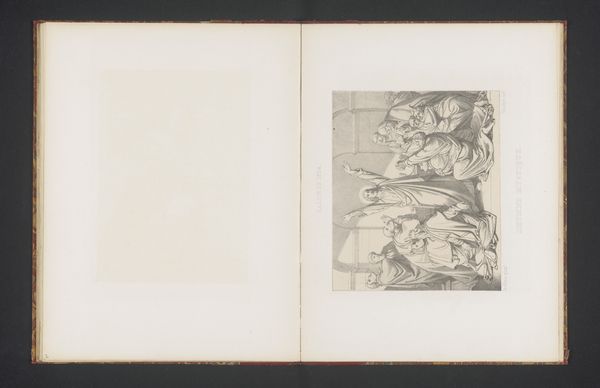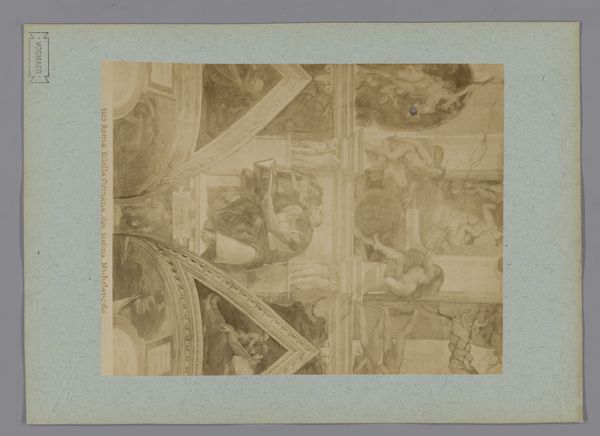
photography, sculpture
#
portrait
#
still-life-photography
#
sculpture
#
photography
#
sculpture
Dimensions: height 179 mm, width 239 mm
Copyright: Rijks Museum: Open Domain
Curator: We're now looking at a photograph entitled "Beeld van Albrecht von Wertheim in de dom van Bamberg", or "Statue of Albrecht von Wertheim in Bamberg Cathedral," which was likely created sometime between 1900 and 1920. Editor: There's a somber formality to the piece, isn't there? It gives off the feeling of preserved memory or distant, solemn history. Curator: Yes, this work presents an image of a sculptural element within the Cathedral. What we're seeing is a photograph, almost like a documentary piece of sorts, capturing the textures and forms of sculpture with a sharp attention to light. Note the fall of shadows accentuating the folds of fabric, emphasizing its three-dimensionality. Editor: I'm intrigued by how the clothing communicates social rank through the embellishment and cut of cloth. The embroidered designs and decorative rings on the sculpted hands tell us a great deal about the historical period. This approach can reflect ideas on political power and personal piety that were promoted within social elites during this period. Curator: Certainly. Semiotically, we can examine the various iconographic signs: The rings could signify allegiance or familial wealth. Note that the folds of the fabric create complex visual textures, almost operating as miniature abstract compositions. The composition itself draws our eyes into an upward movement. The sculptor’s detailed and intentional forms are carefully displayed by the photographer to communicate particular narratives. Editor: But one has to consider, too, how the work and image were produced. Photographs in this era, especially images featuring statuary of Bamberg Cathedral, served the specific role of circulating ideas about cultural heritage, solidifying certain views around Bamberg, the clergy, and their relationship with power and memory in general. How the photography has influenced the views about sculptural heritage in modern context becomes very crucial. Curator: Agreed. Analyzing how this singular photographic image functions within its broader visual culture illuminates how these pieces interact within society. This creates, effectively, what Foucault might deem a historical stratum within society and artistic representation. Editor: Precisely, that interplay between aesthetics, memory and historical contexts offers a lot for interpretation. Curator: Ultimately, by focusing on the interplay between artistic form and subject, we reveal its unique historical expression within society and aesthetic vision.
Comments
No comments
Be the first to comment and join the conversation on the ultimate creative platform.

